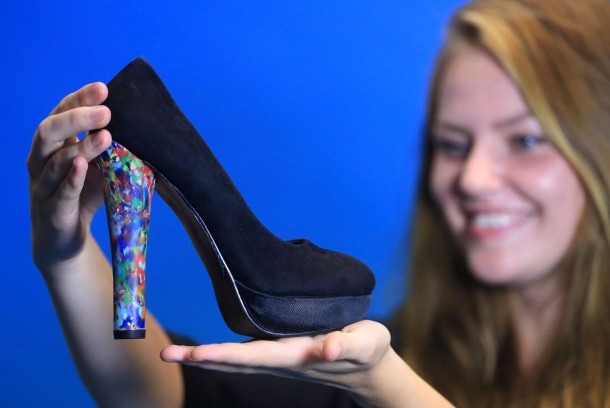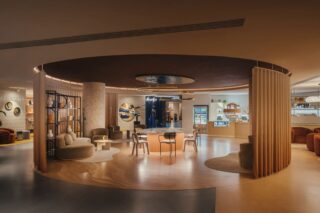Among the many delights, this international trade fair for the working world has to offer, in the far back of Hall 8 we spotted an amazing materials exhibition with a number of impressive and intelligent designs. During a speech in Milan last April, Tom Dixon said that designers LOVE materials, and it might come as no surprise, but “70% of all innovations are being based on new material,” Haute Innovation.
No wonder then at this year’s exhibition, several objects made from surprising and natural materials caught viewers’ attention from their beautiful design. Coffee cups made from ground coffee beans, a bicycle helmet made from linen fibers, high heels made from ocean plastic and plenty more to catch the eye and get the imagination running.
It was 2009 in Italy when the smell of ground coffee beans was on its way to becoming something more. One intense study night after the next, with hefty coffee intake, German product designer Julian Lechner—studying in Italy at the time—had an idea. He took coffee waste and turning it into a renewable raw material used to produce new objects. By 2015 the first espresso cup made from coffee waste was on the market. Kaffee Form, based in Germany, collects coffee grounds from the local Berlin Gastronomy, where the grounds are then dried, packed and shipped.
#coffee cups made from #recycled coffee grounds! Dishwasher proof too! In the shop now #kirkbylonsdale #kaffeeform pic.twitter.com/0H5jsUXN0n
— Kircabi Roasters (@KircabiRoasters) 8 août 2016
French duo Etienne-Marie de Boissieu and Benoit Denis founded EGIDE in 2014, a new French brand specialized in high-end helmets for urban cycling, include the linen in their products. Linen Hemet in their Apollo collection, amidst other gems on display at the materials exhibition, shines beautifully. The eco-friendly and natural vegetable fiber has great shock-absorbing properties. EGIDE has the fibers undergo resin molding with an anti-UV and scratch-resistant varnish.
Diana Drewes from the agency Haute Innovation in Berlin presented a stool made from mushroom MDF; Laura Spilker’s Walk & Talk high heels made from ocean plastic was on display; Plant-e showed how living plants can generate electricity; Jarrell Goh introduced his Potato chair, made from starchy vegetables like potatoes that are blended, dehydrated and used as a casting material, then dried and bound with flour glue, dried again and finished with a homemade milk-based sealant.
A stool made of waste from the potato industry, furniture from seagrass, fibers from the remnants of the citrus juice production or antiseptic birch bark: the precursors of the next generation’s product culture, in which sustainable handling of our resources is in the foreground and is becoming more and more evident. Natural residues from the food industry or forestry are often found in the production of materials. Designers define properties of the materials, which so far could only have been realized with considerable effort or using chemical products.
It’s an amazing time in the world for designers to play with materials to better living for all.













